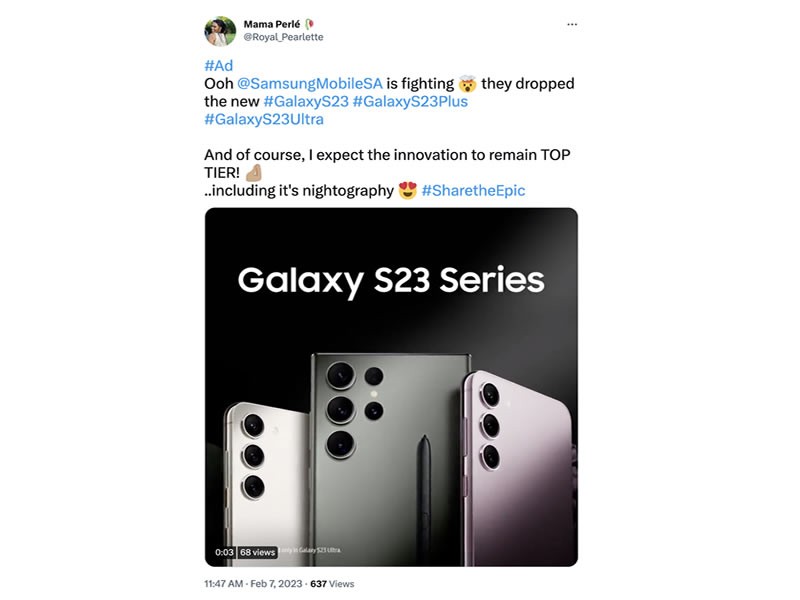Insight Blog
Agility’s perspectives on transforming the employee's experience throughout remote transformation using connected enterprise tools.
5 minutes reading time
(982 words)
How Brands Plan to Market Themselves Effectively in the Financial Downturn
Discover how brands are navigating the financial downturn with effective marketing strategies.
Across a wide range of industries, it's becoming increasingly clear that the short-term future poses many financial challenges for brands. While the initial post-Covid-19 boom saw a period of immense growth across sectors emerge, the ongoing cost-of-living crisis is heavily impacting how customers spend their money. However, times of great difficulty can lead to even greater innovation, and many marketers are using the downturn as an opportunity to optimize their processes and respond accordingly.
Necessity is the mother of invention, and as businesses are being challenged to think more strategically about how to acquire new leads, we're set to see a flurry of new marketing trends designed to win new customers in more cost-effective ways.
To achieve this, we're set to see more technology adapted into marketing tools, and more marketers utilize digital transformation as core principle of their respective strategies.
With this in mind, let's take a deeper look at how marketing trends are set to grow throughout the crisis and beyond:
The Diversification of Social Media Campaigns
One key growing trend that marketers must take note of is the willingness of consumers to discover new social media networks away from the established hegemony of Facebook, Instagram, and Twitter.
Apps like TikTok and BeReal have shown that consumer appetite is drifting away from traditional social media and towards a wider range of platforms. According to Insider Intelligence, Elon Musk's takeover of Twitter in 2022 may lead to a decline of 32 million global monthly users over the course of the next two years–signifying the market opportunity for smaller networks.
"We're seeing a lot of people in a lot of different verticals really thinking outside the box," notes Amy Rumpler, senior vice president for Basis Technologies.
Data suggests that different social media networks operate with vastly different demographics regarding users, and the marketers best placed to embrace the diversification of campaigns will be those who know to adapt their content to match different target audiences across channels.
We will also see the core principles of emerging networks like TikTok pave the way for more short-form video content and the return of punchy advertising campaigns that focus all energy into short snippets of content. What is userful with TiKTok is its engagement level, the TikTok engagement rate measures the level of interaction and connection your content generates with your audience.
It reflects the effectiveness of your videos in capturing viewers' attention and encouraging their participation.
The Rise of the Micro-Influencer
Although influencer marketing is nothing new, we're now seeing marketers discover the value of micro-influencers.
Amassing around 100,000 followers or less, micro-influencers are increasingly becoming the target of marketing campaigns that can reach more passionate audiences at a relatively low cost in comparison to celebrity influencers.
While big names throughout social media can cost up to $10,000 per post or more, micro-influencers can advertise your products or services for a fraction of the cost–or even for a product freebie.
In the midst of the cost-of-living crisis, we'll see more campaigns look to micro-influencers as an intelligent option to reach more engaged audiences.
Because they have a smaller following, micro-influencers are typically more engaged in their followers, creating a more passionate network of individuals who could be more receptive to campaigns.
In some cases, micro-influencers can double the average engagement rate of 5% for larger influencers.
By identifying and approaching micro-influencers who match their customer profile, marketers will create more focused campaigns at lower costs as a means of combating the cost-of-living crisis.
Utilizing Emerging Technologies for Greater Customer Loyalty
With the age of Web3 looming, technologies like NFTs can deliver better brand loyalty on a scale that's never been seen before.
At present, non-fungible tokens are widely created and bought as collectibles or artistic investments. But at their core is a unique proof of ownership model powered by blockchain which can be used to revamp customer loyalty schemes with more effective and appealing rewards.
Brands can use NFTs as a token to collect when customers make a purchase. The token could then be used to access exclusive areas of a website or online space where new offers can be unlocked and a vibrant community can be built.
Non-fungible tokens can also be distributed as collectibles in their own right–and brands can work with artists to create eye-catching themed works for customers to collect and trade amongst themselves.
As the metaverse becomes more accessible, NFTs could also be used to create a digital double of products bought so customers can kit out their virtual avatar in their real-world clothes.
As technology surrounding the metaverse becomes more accessible, we're likely to see NFTs become more widely used. As a result, there will be great demand for NFT marketing agencies, as they can implement effective marketing campaigns to attract people interested in NFTs
The recent collaborations between Meta and Ray-Ban glasses, which are fully fledged smart glasses which take the form of the brand's big selection of iconic eyewear, show that the next generation of the internet is on its way, and it's certainly worth marketers making moves to embrace emerging technologies today.
Although the world of marketing is likely to undergo some significant disruption in the future, there's no reason for marketers to shy away from innovation today.
The cost-of-living crisis is likely to impact customer spending power around the world, but this could be the perfect moment to look for new solutions to maintain revenue streams and secure sales throughout the uncertainty.
With this in mind, the ongoing financial downturn is likely to impact innovators less than those who batten down the hatches. Necessity is the mother of invention, and it's going to be those with big ideas who continue to thrive into the future.
Categories
Blog
(2586)
Business Management
(318)
Employee Engagement
(204)
Digital Transformation
(172)
Intranets
(119)
Growth
(117)
Remote Work
(61)
Sales
(48)
Collaboration
(37)
Culture
(29)
Project management
(29)
Customer Experience
(26)
Knowledge Management
(21)
Leadership
(20)
Comparisons
(5)
Ready to learn more? 👍
One platform to optimize, manage and track all of your teams. Your new digital workplace is a click away. 🚀
Free for 14 days, no credit card required.















